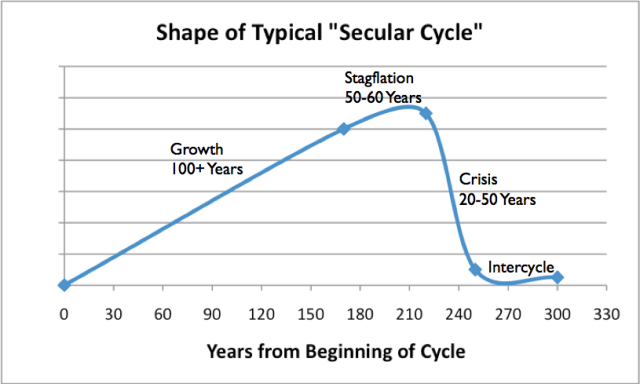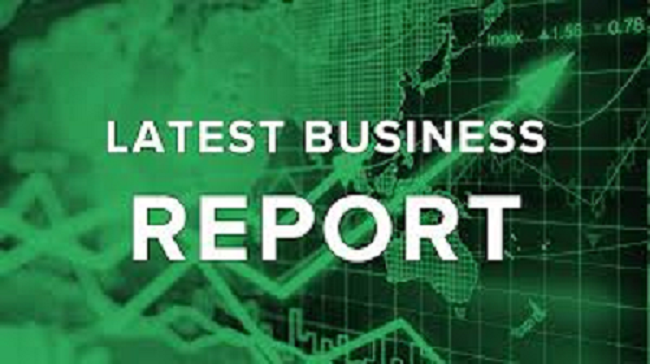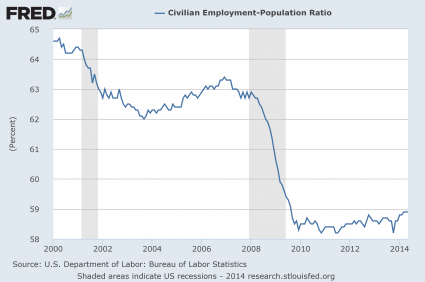The story of energy and the economy seems
to be an obvious common sense one: some sources of energy are becoming scarce or
overly polluting, so we need to develop new ones. The new ones may be more
expensive, but the world will adapt. Prices will rise and people will learn to
do more with less. Everything will work out in the end. It is only a matter of
time and a little faith. In fact, the Financial Times published an article
recently called “
Looking Past the Death of Peak Oil” that
pretty much followed this line of reasoning.
Energy Common Sense Doesn’t Work Because the World is
Finite
The main reason such common sense doesn’t
work is because in a finite world, every
action we take has many direct and indirect effects. This chain of effects
produces connectedness that makes the economy operate as a network. This network
behaves differently than most of us would expect. This networked behavior is not
reflected in current economic models.
Most people believe that the amount of oil in the ground is the
limiting factor for oil extraction. In a finite world, this isn’t true. In a
finite world, the limiting factor is feedback loops that lead to inadequate
wages, inadequate debt growth, inadequate tax revenue, and ultimately inadequate
funds for investment in oil extraction. The behavior of networks may lead to
economic collapses of oil exporters, and even to a collapse of the overall
economic system.
An issue that is often overlooked in the
standard view of oil limits is diminishing returns. With diminishing returns,
the cost of extraction eventually rises because the easy-to-obtain resources are
extracted first. For a time, the rising cost of extraction can be hidden by
advances in technology and increased mechanization, but at some point, the
inflation-adjusted cost of oil production starts to rise.
With diminishing returns, the economy is,
in effect, becoming less and less efficient, instead of becoming more and more
efficient. As this effect feeds through the system, wages tend to fall and the
economy tends to shrink rather than grow. Because of the way a networked system
“works,” this shrinkage tends to collapse the economy. The usage of energy
products of all kinds is likely to fall, more or less simultaneously.
In some ways current, economic models are
the equivalent of flat maps, when we live in s spherical world. These models
work pretty well for a while, but eventually, their predictions deviate farther
and farther from reality. The reason our models of the future are wrong is
because we are not imagining the system correctly.
The Connectedness of a Finite World
In a finite world, an action a person
takes has wide-ranging impacts. The amount of food I eat, or the amount of
minerals I extract from the earth, affects what other people (now and in the
future) can do, and what other species can do.
To illustrate, let’s look at an
exaggerated example. At any given time, there is only so much broccoli that is
ready for harvest. If I decide to corner the broccoli market and buy up 50% of
the world’s broccoli supply, that means that other people will have less
broccoli available to buy. If those growing the broccoli spray the growing crop
with pesticides, “broccoli pests” (caterpillars, aphids, and other insects) will
die back in number, perhaps contributing to a decline of those species. The
pesticides may also affect desirable species, like bees.
Growing the broccoli will also deplete
the soil of nutrients. If 50% of the world’s broccoli is shipped to me, the
nutrients from the soil will find their way around the world to me. These
nutrients are not likely to be replaced in the soil where the broccoli was grown
without long-distance transport of nutrients.
To take another example, if I (or the
imaginary company I own) extract oil from the ground, the extraction and the
selling of that oil will have many far-ranging effects:
- The oil I extract will most likely be
the cheapest, easiest-to-extract oil that I can find. Because of this, the oil
that is left will tend to be more expensive to extract. My extraction of oil
thus contributes to diminishing returns–that is, the tendency of the
cost of oil extraction to rise over time as resources deplete.
- The petroleum I extract from the ground
will consist of a mixture of hydrocarbon chains of varying lengths. When I send
the petroleum to a refinery, the refinery will separate the petroleum into
varying length chains: short chains are gasses, longer chains are liquids, still
longer ones are very viscous, and the longest ones are solids, such as asphalt.
Different length chains are used for different purposes. The shortest chains are
natural gas. Some chains are sold as gasoline, some as diesel, and some as
lubricants. Some parts of the petroleum spectrum are used to make plastics,
medicines, fabrics, and pesticides. All of these uses will help create jobs in a
wide range of industries. Indirectly, these uses are likely to enable higher
food production, and thus higher population.
- When I extract the oil from the ground,
the process itself will use some oil and natural gas. Refining the oil will also
use energy.
- Jobs will be created in the oil
industry. People with these jobs will spend their money on goods and services of
all sorts, indirectly leading to greater availability of jobs outside the oil
industry.
- Oil’s price is important. The lower the
price, the more affordable products using oil will be, such as cars.
- In order for consumers to purchase cars
that will operate using gasoline, there will likely be a need for debt to buy
the cars. Thus, the extraction of oil is tightly tied to the build-up of
debt.
- As an oil producer, I will pay taxes of
many different types to all levels of governments. (Governments of oil exporting
countries tend to get a high percentage of their revenue from taxes on oil. Even
in non-exporting countries, taxes on oil tend to be high.) Consumers will also
pay taxes, such as gasoline taxes.
- The jobs that are created through the
use of oil will lead to more tax revenue, because wage earners pay income
taxes.
- The government will need to build more
roads, partly for the additional cars that operate on the roads thanks to the
use of gasoline and diesel, and partly to repair the damage that is done as
trucks travel to oil extraction sites.
- To keep the oil extraction process
going, there will likely need to be schools and medical facilities to take care
of the workers and their families, and to educate those workers.
Needless to say, there are other effects
as well. The existence of my oil in the marketplace will somehow affect the
market price of oil. Burning of the oil may affect the climate, and will tend to
acidify oceans. It would be possible to go on and on.
The Difficulty of Substituting Away from
Oil
In some sense, the use of oil is very
deeply imbedded into the operation of the overall economy. We can talk about
electricity replacing oil, but oil’s involvement in the economy is so pervasive,
it can’t possibly replace everything. Perhaps electricity might replace gasoline
in private passenger automobiles. Such a change would reduce the demand for
hydrocarbon chains of a certain length (C7 to C11), but that only reduces demand for one
“slice” of the oil mixture. Both shorter and longer chain hydrocarbons would be
unaffected.
The price of gasoline will drop, (making
Chinese buyers happy because more will be able to afford to use motorcycles),
but what else will happen? Won’t we still need as much diesel, and as many
medicines as before? Refiners can fairly easily break longer-chain molecules
into shorter-chain molecules, so they can make diesel or asphalt into gasoline.
But going the other direction doesn’t work well at all. Making gasoline into
shorter chains would be a huge waste, because gasoline is much more valuable
than the resulting gases.
How about replacing all of the taxes
directly and indirectly related to the unused gasoline? Will the price of
electricity used in electric-powered vehicles be adjusted to cover the foregone
tax revenue?
If a liquid substitute for oil is made,
it needs to be low priced, because a high-priced substitute for oil is very
different from a low-priced substitute. Part of the problem is that high-priced
substitutes do not leave enough “room” for taxes for governments. Another part
of the problem is that customers cannot afford high-priced oil products. They
cut back on discretionary expenditures, and the economy tends to contract. There
are layoffs in the discretionary sectors, and (again) the government finds it
difficult to collect enough tax revenue.
The Economy as a Networked System
I think of the world economic system as
being a networked system, something like the dome shown in Figure 1. The dome
behaves as an object that is different from the many wooden sticks from which it
is made. The dome can collapse if sticks are removed.
The world economy consists of a network
of businesses, consumers, governments, and resources that is bound together with
a financial system. It is self-organizing, in the sense that consumers decide
what to buy based on what products are available at what prices. New businesses
are formed based on the overall environment: potential customers, competition,
resource availability, services available from other businesses, and laws.
Governments participate in the system as well, building infrastructure, making
laws, and charging taxes.
Over time, all of these gradually change.
If one business changes, other business and consumers are likely to make changes
in response. Even governments may change: make new laws, or build new
infrastructure. Over time, the tendency is to build a larger and more complex
network. Unused portions of the network tend to wither away–for example, few
businesses make buggy whips today. This is why the network is illustrated as
hollow. This feature makes it difficult for the network to “go backward.”
The network got its start as a way to
deliver food energy to people. Gradually economies expanded to include other
goods and services. Because energy is required to “do work,” (such as provide
heat, mechanical energy, or electricity), energy is always central to an
economy. In fact, the economy might be considered an energy delivery system.
This is especially the case if we consider wages to be payment for an important
type of energy–human energy.
Because of the way the network has grown
over time, there is considerable interdependency among different types of
energy. For example, electricity powers oil pipelines and gasoline pumps. Oil is
used to maintain the electric grid. Nuclear electric plants depend on
electricity from the grid to restart their operations after outages. Thus, if
one type of energy “has a problem,” this problem is likely to spread to other
types of energy. This is the opposite of the common belief that energy
substitution will fix all problems.
Economies are Prone to Collapse
We know the wooden dome in Figure 1 can
collapse if “things go wrong.” History shows that many civilizations have
collapsed in the past. Research has been done to see why this is the case.
Joseph Tainter’s research indicates that
diminishing returns played an important role in the collapse of past
civilizations. Diminishing returns would be a problem when adding more workers
didn’t add a corresponding amount more output, particularly with respect to
food. Such a situation might be reached when population grew too large for a
piece of arable land. Degradation of soil fertility might play a role as
well.
Today, we are reaching diminishing
returns with respect to oil supply, as evidenced by the rising cost of oil
extraction. This is occurring because we removed the easy to extract oil, and
now must move on to the more expensive to extract oil. In effect, the system is
becoming less efficient. More workers and more resources of other types are
needed to produce a given barrel of oil. The value of the barrel of oil in terms
of what it can do as work (say, how far it can move a car, or how much heat it
can produce) is unchanged, so the value each worker is producing is less. This
is the opposite of efficiency.
Peter Turchin and Sergey Nefedov have
done research on the nature of past collapses, documented in a book called
Secular Cycles. An economy would clear a
piece of land, or discover an approach to irrigation, or by some other means
discover a way to expand the number of people who could live in an area. The
resulting economy would grow for well over 100 years, until population started
catching up with resource availability. A period of stagflation followed,
typically for about 50 or 60 years, as the economy tried to continue to grow,
but bumped against increasing obstacles. Wage disparity grew as wages of new
workers lagged. Debt also grew.
Eventually collapse occurred, over a
period of 20 to 50 years. Often, much of the population died off. An inter-cycle
period followed, during which resources regenerated, so that a new civilization
could arise.

Figure 2. Shape of
typical Secular Cycle, based on work of Peter Turkin and Sergey Nefedov in
Secular Cycles.
One of the major issues in past collapses
was difficulty in funding government services. Part of the problem was that
wages of common workers were low, making it difficult to collect enough taxes.
Part of governments’ problems were that their costs went up, as they tried to
solve the increasingly complex problems of society. Today these costs might
include unemployment insurance and bailing out banks; in ages past they included
larger armies to try to conquer new lands with more resources, as their own
resources depleted.
Today’s Situation
Our situation isn’t too different. The
economy started growing in the early 1800s, abut the we started using fossil
fuels, thanks to technology that allowed us to use them. Oil is the fossil
fuel that is depleting most quickly, because it is very valuable in many uses,
including transportation, agriculture, construction, mining, and as a raw
material to produce many goods we use every day.
Our economy seems to have hit stagflation
in the early 1970s, when oil prices first began to spike. Now, some of the
symptoms we are seeing are looking distressingly like the symptoms that other
civilizations saw prior to the beginning of collapse. Our networked system has
many weak points:
- Oil exporters Governments can collapse, as
the government of the Former Soviet Union did in 1991, if oil prices are too
low. The fact that oil prices have not risen since 2011 is probably contributing
to unrest in the Middle East.
- Oil importers Spikes in oil prices lead to
recession.
- Governments funding Debt keeps expanding;
infrastructure needs fixes but they don’t get done; too many promises for
pensions and healthcare.
- Failing financial systems Debt defaults are
likely to be a major problem if the economic system starts shrinking. Debt is needed to keep oil prices
up.
- Contagion if one energy product is in short
supply This happens many ways. For example, nearly all businesses rely
on both electricity and oil. If either one of these becomes unavailable (say oil
to supply parts and ship goods to customers), then the business will need to
close. Because of the business closure, demand for other energy products the
business uses, such as electricity and natural gas, will drop at the same time.
Direct use of energy products to produce other energy products (mentioned
previously) also contributes to this contagion.
Unfortunately, when it comes to operating
an economy, it is
Liebig’s Law of the Minimum that rules. In other
words, if any required element is missing, the system doesn’t work. If
businesses can’t get financing, or can’t pay their employees because banks are
closed, businesses may need to close. Workers will get laid off, and the
inability to afford energy
products (economists would call this “lack of demand”) will be what brings
the system down.
Modeling our Current Economy
Everywhere we look, we see models of how
the energy system or the economy can be expected to work. None of the models
match our current situation well.
Growth will Continue As in the Past It is
pretty clear that this model is inadequate. Every
revision to growth estimates seems to be
downward. In a finite world, we know that growth at the same rate can’t
continue forever–we would run out of resources, and places for people to stand.
The networked nature of the system explains how the system really grows, and why
this growth can’t continue indefinitely.
Rising Cost of Producing Energy Products Doesn’t
Matter In a global world, we compete on the price of goods and services. The cost of
producing these goods and services depends on (a) the cost of energy products
used in making these goods and services (b) wages paid to workers for producing
these services (c) government, healthcare, and other overhead costs, and (d)
financing costs.
One part of our problem is that with
globalization, we are competing against warm countries–countries that receive
more free energy from the sun than we do, so are warmer than the US and Europe.
Because of this free energy from the sun, homes do not need to be built as
sturdily and less heat is needed in winter. Without these costs, wages do not
need to be as high. These countries also tend to have less expensive healthcare
systems and lower pensions for the elderly.
Governments can try to fix our
non-competitive cost structure compared to these countries by reducing interest
rates as much as possible, but the fact remains–it is very difficult for
countries in cold parts of the world to compete with countries in warm parts of
the world in making goods. This cost competition problem becomes worse, as the
price of energy products rises because we are competing with a cost of $0 for
heating requirements. If cold countries add carbon taxes, but do not surcharge
goods imported from warm countries, the disparity with warm countries becomes
even worse.
In the early years of civilization, warm
countries dominated the world economy. As energy prices rise, this situation is
likely to again occur.
Price is Not Important Apart from the warm
country–cool country issue, there is another reason that energy cost (in real
goods, not just in financial printed money) is important:
The price of the energy used in the
economy is important because it is tied to how much must be “given up” to buy
the oil or anther energy product (such as food). If energy is cheap, little
needs to be given up to obtain the energy. Because of energy’s huge ability to
do “work,” the work that is obtained can easily make goods and services that
compensate for what has been given up. If energy is expensive, there is much
less benefit (or perhaps negative benefit) when what is given up is compared to
the work that the energy product provides. As a result, economic growth is held
back by high-priced energy products of any kind.
Supply and Demand Leads to Higher Prices and
Substitutes Major obstacles to the standard model working are (a)
diminishing returns with respect to oil supply, (b) recession and even
government failure of oil importers, when oil prices rise and (c) civil unrest
and even government failure in oil exporters, if oil prices don’t keep
rising. If there isn’t enough oil supply, oil prices rise, but there are soon so
many follow-on effects that oil prices fall back again.
Reserves/ Production This ratio supposedly
tells how long we can produce oil (or natural gas or coal) at current extraction
rates. This ratio is simply misleading. The real limit is how long the economy
can function, given the feedback loops related to diminishing returns. If a
person simply looks at investment dollars required, it becomes clear that this
model doesn’t work. See my post
IEA Investment Report – What is Right; What
is Wrong.
Energy Payback Period, Energy Return on Energy
Invested, and Life Cycle Analysis These approaches look at the
efficiency of energy production, comparing energy used in the process to energy
produced in the process. In some ways, they work–they show that we are becoming
less and less efficient at producing oil, or coal, or natural gas, as we move to
more difficult to extract resources. And they can be worthwhile, if a decision
is being made as to which of two similar devices to purchase: Wind Turbine A or
Wind Turbine B.
Unfortunately, modeling a finite world is
virtually impossible. These approaches use narrow boundaries–energy used in
pulling oil out of the ground, or making a wind turbine. It doesn’t tell as much
as we need to know about new energy generation equipment, together with (a)
changes needed elsewhere in the system and (b) whatever financial system is used
to pay for the energy generated with that system, will actually work in the
economy. To really analyze the situation, broader analyses are needed.
Furthermore, there are the inherent
assumptions that (a) we have a long time period to make changes and (b) one
energy source can be substituted for another. Neither of these assumptions is
really true when we are this close to oil limits.
Where the Peak Oil Model Went Wrong
Part of the Peak Oil story is right: We
are reaching oil limits, and those limits are hitting about now. Part of the
Peak Oil story is not right, though, at least in a common version that is
prevalent now. The version that is prevalent is more or less equivalent to the
“standard” view of our current situation that I talked about at the beginning of
the post. In this standard view, oil supply will not disappear very
quickly–approximately 50% of the total amount of oil ever extracted will become
available after the peak in oil production. There will be considerable
substitution with other fuels, often at higher prices. The financial system may
be affected, but it can be replaced, and the economy will continue.
This view is based on writing of M. King
Hubbert
back in 1957. At that time, it was commonly
believed that nuclear energy would provide electricity
too cheap to meter. In fact, in a
1962 paper, Hubbert talks about “reversing
combustion,” to make liquid fuels. Thus, not only did his story include cheap
electricity, it also included cheap liquid fuels, both in huge quantity.
In such a situation, growth could
continue indefinitely. There would be no need to replace huge numbers of
vehicles with electric vehicles. Governments wouldn’t have a problem with
funding. There would be no problem with collapse. The supply of oil and other
fossil fuels could decline slowly, as suggested in his papers.
But the story of the cheap, rapid nuclear
ramp-up didn’t materialize, and we gradually got closer to the time when limits
were beginning to hit. Major changes were needed to Hubbert’s story to reflect
the fact that we really didn’t have a fix that would keep business as usual
going indefinitely. But these changes never took place. Instead the view of how
little change was needed to keep the economy going kept getting downgraded more
and more. “Standard” economic views filtered into the story, too.
There is a correct version of the oil limits story to
tell. It is the story of the failure of networked systems.




